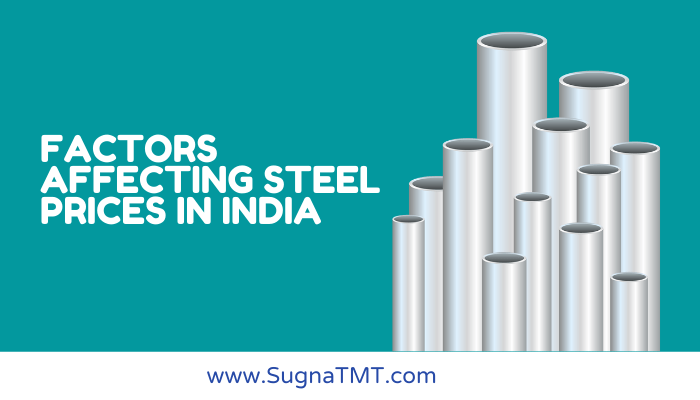In the modern day, the steel sector is a profitable one in our nation. But the business is also expensive. The steel industry’s sole strategy for survival is to reduce production costs.
Many factors, including iron ore, coal, limestone, natural gas, and power, among others, are necessary for steel production. Like any other commodity, manufactured steel is subject to a variety of circumstances that may affect the price.
Main Factors Affecting Steel Prices

The following are some of the elements that have an impact on the steel prices in India:
1. Steel’s Demand and Supply
Like for any other item or service in any market, the demand for and supply of steel are the primary determinants of its price. Depending on two essential factors, including supply and demand, the market makes the predominant forecast of the steel prices in the market.
2. The Supply and Price of Raw Materials
TMT bars are made from iron ore, coal, dolomite, limestone, and several other raw materials. The cost of these raw materials is influenced by their supply, which also impacts the cost of TMT bars.
A lack of these resources causes demand to outpace supply, which drives up the price of steel bars. Energy is a significant additional raw element since melting steel requires a lot of heat.
3. Costs of shipping and labor
Although prices for locally made goods are typically lower, this isn’t always the case. The cost of transportation into and out varies significantly based on the season, the value of the currency, and a variety of political circumstances.
However, there has been pressure on the industrial sector to employ local materials because there are times when importing the raw ingredients for steel or steel itself may be less expensive than making it domestically. While encouraging businesses to “buy local” creates more jobs, it may also increase labor expenses.
4. The price of energy and power
The factors most significantly influencing the price of steel are oil and electricity. While some well-known firms have switched to solar-powered factories to permanently lower their manufacturing costs, other businesses continue to run their equipment on oil and electricity.
Global markets determine oil prices, which have a significant impact on steel costs. You will learn from your investigation that the prices of oil and steel are closely related.
5. Exchange rate fluctuations
The price of steel is largely influenced by the strength of the US dollar, but it is also significantly influenced by the strength of the other currencies. Even the most resilient industry will be impacted by a declining currency.
Other elements that affect steel pricing include market maturity, production costs, and international political and economic issues.
Final Words
To sum up, it is to say that the steel industry’s sole strategy for survival is to reduce production costs. By accurately predicting the behavior of the market, it is simple to reduce their manufacturing costs.
Over 25 lakh people have direct and indirect employment opportunities because of the country’s 2 percent annual GDP contribution from the steel industry in India. The building, automotive, electrical appliance, machine, etc. industries are impacted by steel costs.
To accurately predict market trends and determine prices, one must conduct a thorough examination of each of these aspects, as well as a great number of additional factors.

